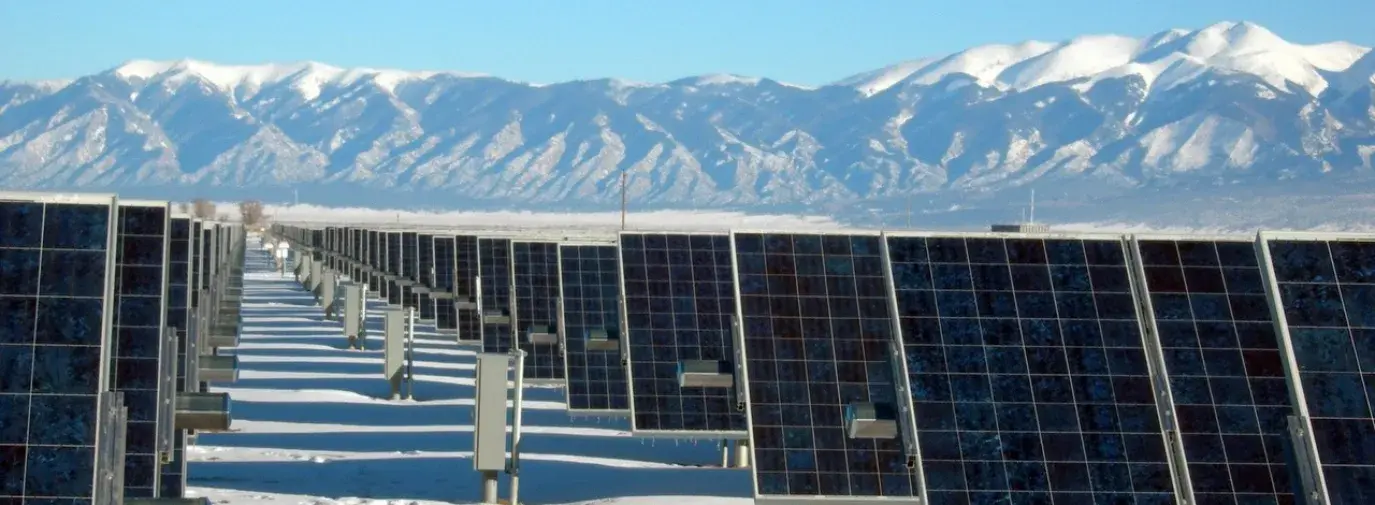
After a year with their solar hot water heater, homeowners Bob Allen and Lyle Rudensey say they’ll never go back to relying on a conventional water heater. Even in gloomy, rainy Seattle, they are saving money and energy by heating all of their water with the power of the sun.
“With a lack of leadership at the federal level, I feel it’s very important that we all do what we can to reduce our dependence on fossil fuels and reduce greenhouse gases,” says Rudensey. “Solar hot water systems are a great place to start. They’re not as expensive as solar photovoltaics, and they’ll save you substantial amounts of energy and money.”
Looking at his household energy bills, Lyle notes that it’s hard to quantify the exact dollar amount the new water heater has saved, because he and Bob also installed energy-efficient appliances and a solar photovoltaic system last year, as part of an overall strategy to reduce their dependence on fossil fuels. Still, according to the American Council for an Energy-Efficient Economy (ACEEE), water heating uses more household energy than any activity other than heating and cooling, so replacing your household’s water-heating energy with free power from the sun will have a significant effect on your bottom line. With all their savings combined, Lyle points out that his and Bob’s electric bills have dropped to a low of $5.
“Plus, the water heater increased the value of the house,” Allen adds. “And it’s a hedge against future energy cost increases.”
Allen and Rudensey installed an active solar water heater with evacuated tube collectors, which they say works great in the Pacific Northwest, because the heater keeps working even on overcast days or when temperatures are freezing outside.
“I can’t think of anything negative to say about it,” says Rudensey. “It never ceases to amaze me to see our solar hot water system still pumping 80- to 100-degree water late into the evening on a day when it isn’t even sunny.”
Active Versus Passive Solar Water Heaters
When you select a solar water heater for your home, you can choose between an active system (like Bob and Lyle’s), or a passive system.
- ACTIVE SYSTEMS use a pump to move water through their heating system, and this requires a source of energy (often a solar photovoltaic panel).
An active system stores water in a tank inside your house, and uses its pump to move either water or a “heat exchange” fluid through a “collector” on your roof. Collectors are the components of your solar water heating system it to heat your water. Used in freezing climates, the heat-exchange fluid is a non-freezing liquid that carries the sun’s heat from the roof to your tank, where it transfers the heat to your water. The fluid re-circulates to the roof to be heated again, while the water flows on to your tap. (This fluid is usually propylene glycol, which the FDA has approved as an additive in food and medicine. However, it is a suspected neuro- and respiratory toxin, according to the National Institute of Occupational Health and Safety.)Although active systems are more expensive but more reliable than passive ones, you may still wish to keep your conventional water heater for a back-up. In fact, in many areas, local building codes require conventional back-ups, so be sure to check with your contractor or local government. Active systems using the “heat exchange” method are best for areas where freezing temperatures are likely. - PASSIVE SYSTEMS use no pumps or electrical components.
Because of their design, passive systems are the simpler of the two. They work essentially like a garden hose left in the sun, except the container for the water is much, much larger. The sun directly heats the water in a large, rooftop tank, which then flows down into your plumbing system. If the water has not yet reached the temperature you’ve selected on your thermostat, your conventional water heater will need to kick in to finish the job. Passive systems are best suited for warm climates where your rooftop storage tank is in no danger of freezing.
Because of their simplicity, passive systems are usually cheaper and can last longer than active systems. The drawbacks are that they can be less reliable, and require a heavy water tank, or collector, to be mounted on your roof. (Depending on your roof’s design, this may require structural support.)
Keep in mind that solar water heaters also work great for your outdoor hot water needs, like pools and hot tubs.
Two Types of Collectors
If you choose an active system, you’ll need to consider two types of collectors:
- FLAT-PLATE COLLECTORS: These are metal boxes with glass or plastic covers (called glazings) on top and a dark-colored “absorber plate” covering a system of pipes on the bottom. Sunlight passes through the glazing and is collected by the absorber plate, which converts the sunlight into heat that is passed on to the liquid (either water or a heat-transfer fluid) in the system of pipes. The advantage of this type of collector is the price—it’s cheaper than evacuated-tube collectors.
- EVACUATED-TUBE COLLECTORS: Best visualized as a series of small, connected thermoses, these collectors consist of individual glass vacuum tubes surrounding a secondary inner tube, through which the liquid or heat-transfer fluid flows. The most efficient (and most costly) collector, the evacuated-tube model works somewhat better than the flat-plate model in cold climates.
Depending on the type of system you choose, a solar water heater can cost from $2,000 to $6,000, and begins paying for itself right away with your reduced energy bills. The amount you save will depend on many factors, including how much hot water you use, your system’s performance, sunlight in your area, and the local cost of conventional fuels, but the US Department of Energy estimates than on average, your bill should decrease by between 50 and 80 percent.
The Tax Incentives for Solar Water Heaters
Federal income tax credits for solar energy have been in place for over a decade. A credit of up to 30 percent was available until the end of 2019. Unfortunately, despite the success of the program at encouraging solar use, the tax credit will decrease year by year until the end of 2021 when it will go away. For 2020, the tax credit remains at 26%.
Be sure to save documentation of all costs associated with the system’s installation (including the labor of any installers, plumbers, or electricians you use), and note that to claim the credit your system must be certified by the Solar Rating Certification Corporation. To claim the credit, file form 5695 as part of your taxes.
To find additional state-level tax incentives, including rebates, property tax credits, sales tax exemptions, and more, visit the Database of State Incentives for Renewable Energy.
Remember that no matter where you live or what your climate, a solar water heater can be a great way to reduce our country’s dependence on fossil fuels, and position you to not only start saving money today, but to save a lot more money in the future as the cost of fuels like natural gas and heating oil continue to rise.
“Some people might think that solar water heaters aren’t worth installing in a climate like the Pacific Northwest, but that’s not true,” says Lyle. “Germany gets about 70 percent as much sunlight as Seattle does, and they are the biggest users of solar power in the world. This is something everyone can do that really makes a huge difference.”







